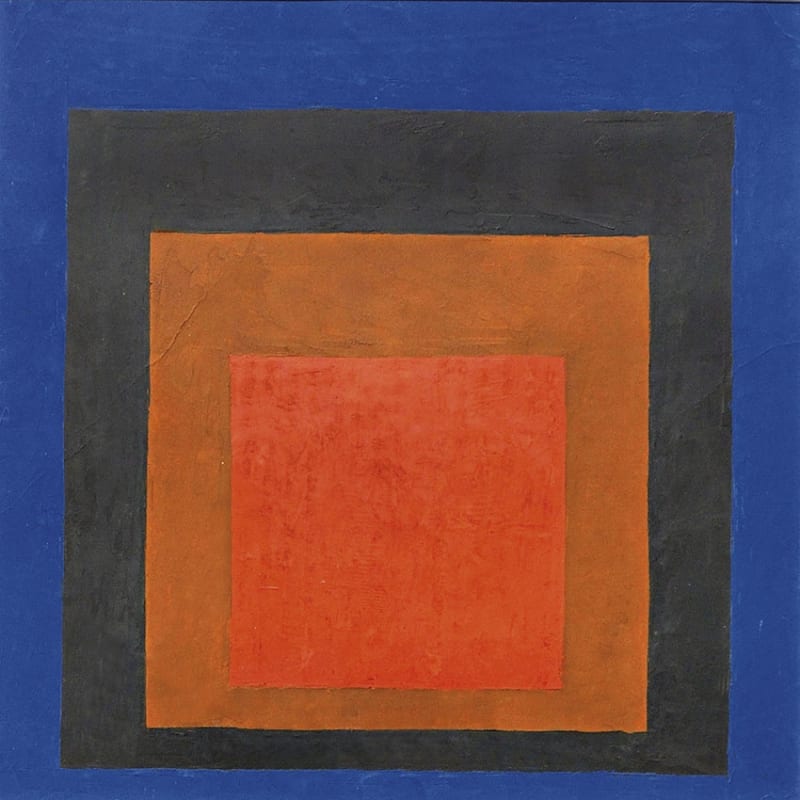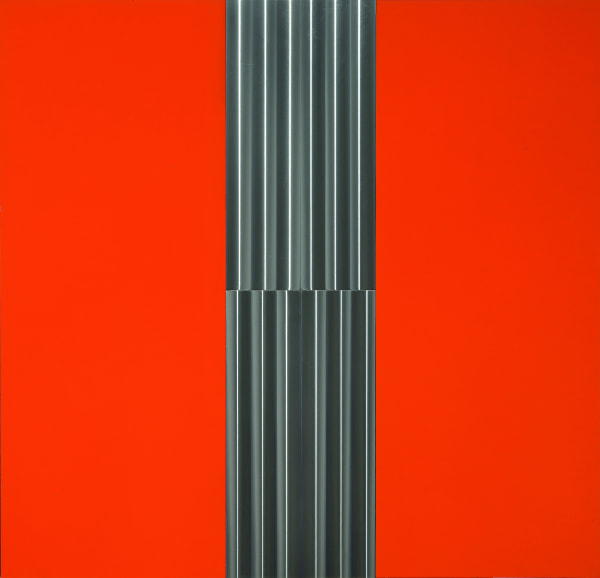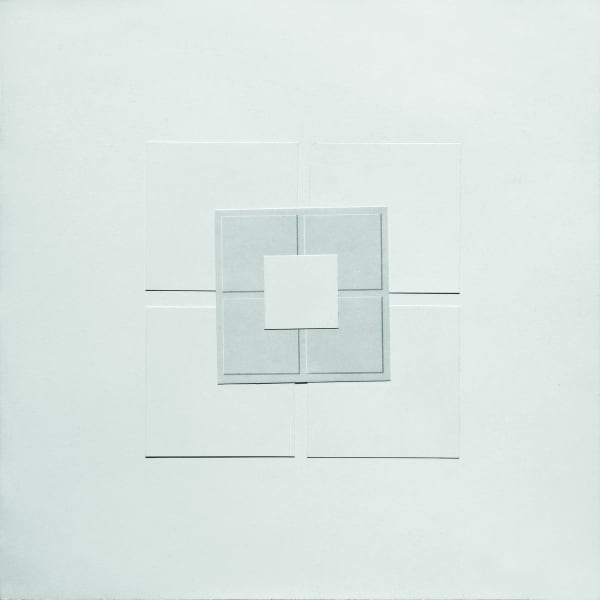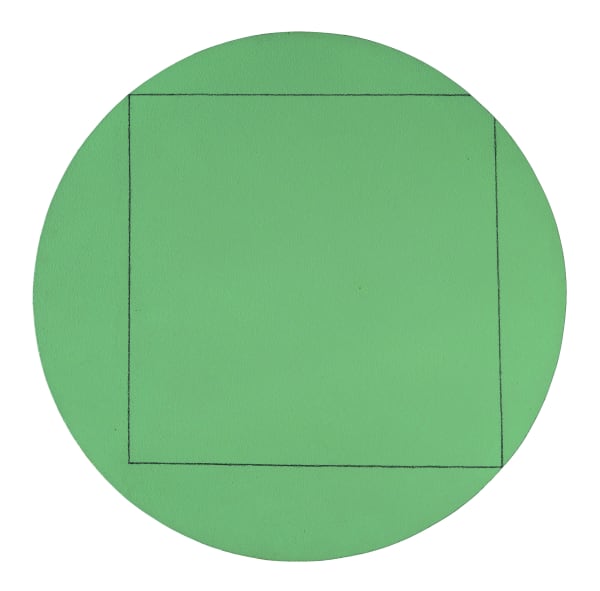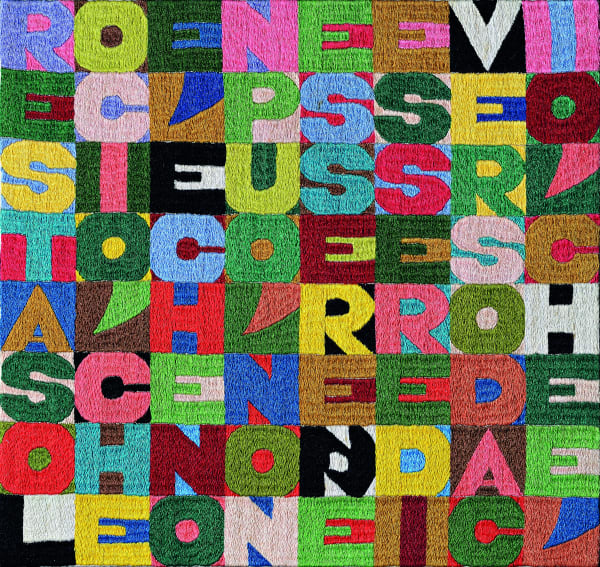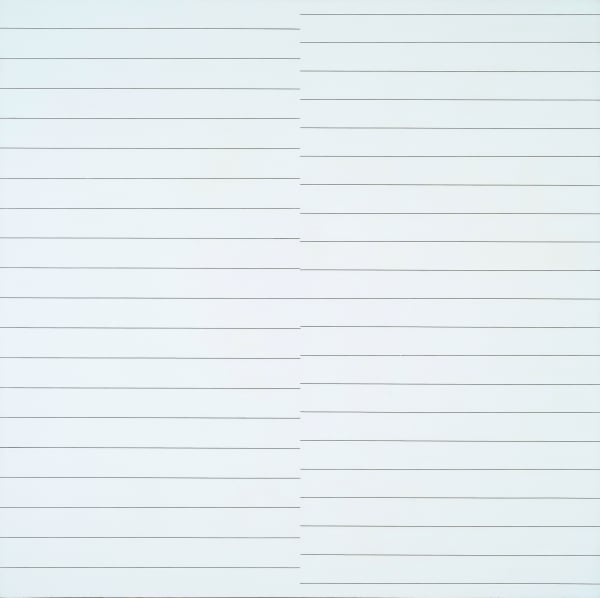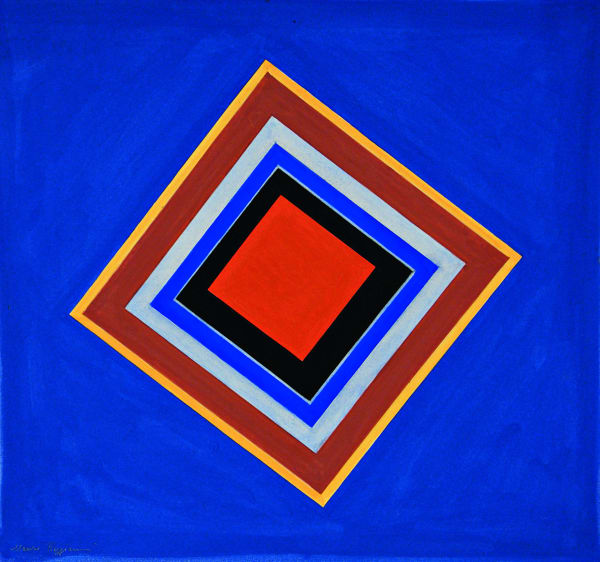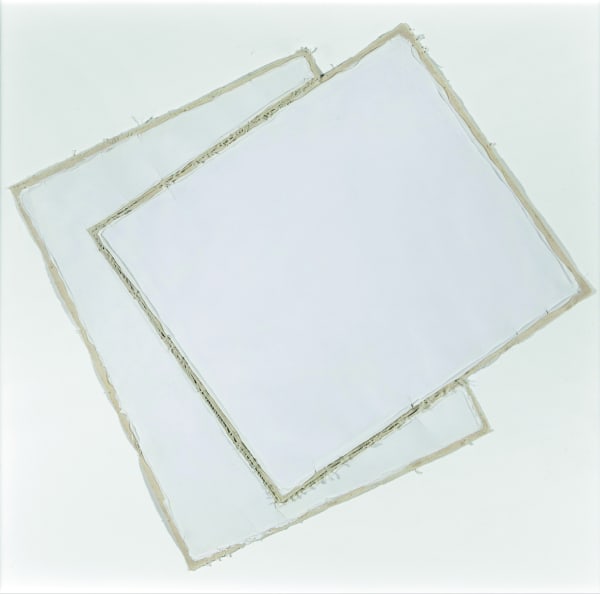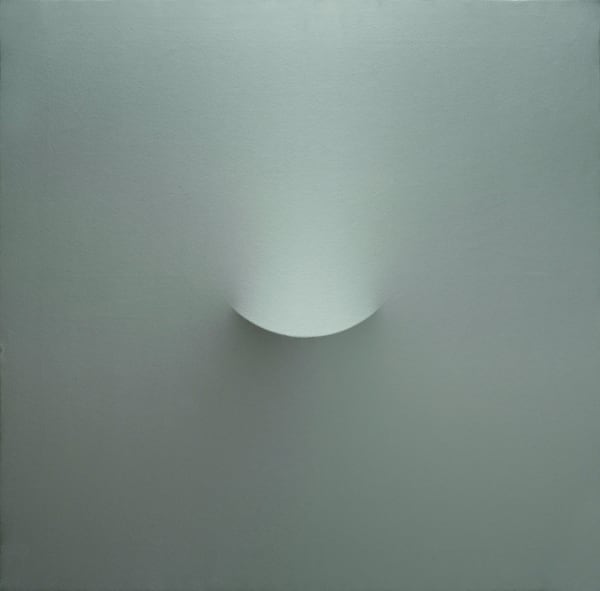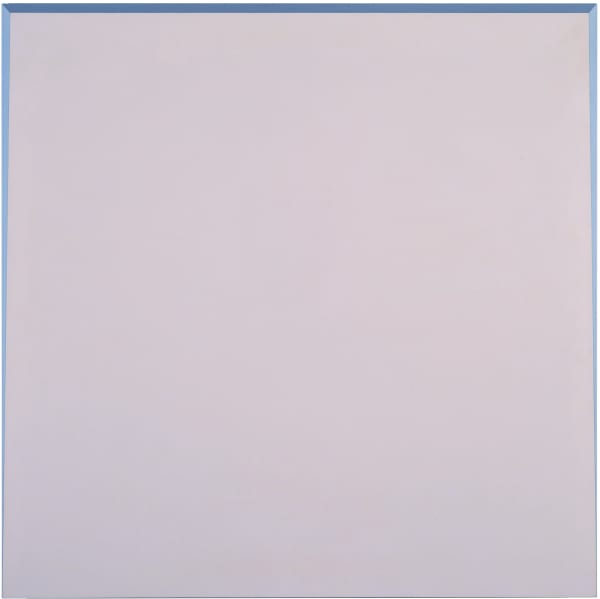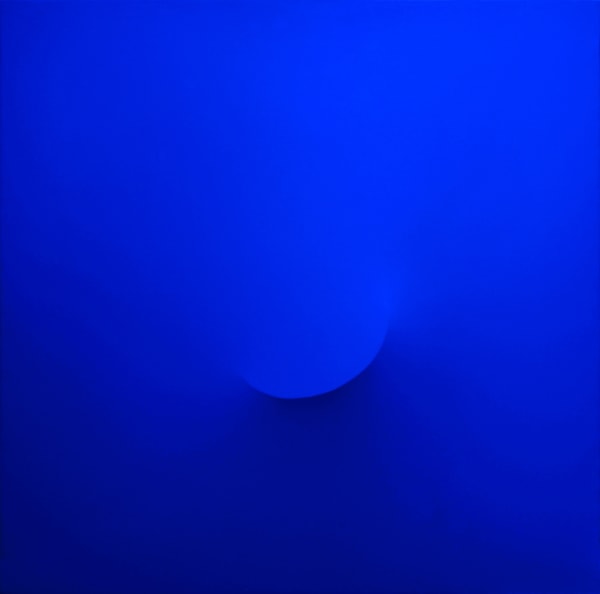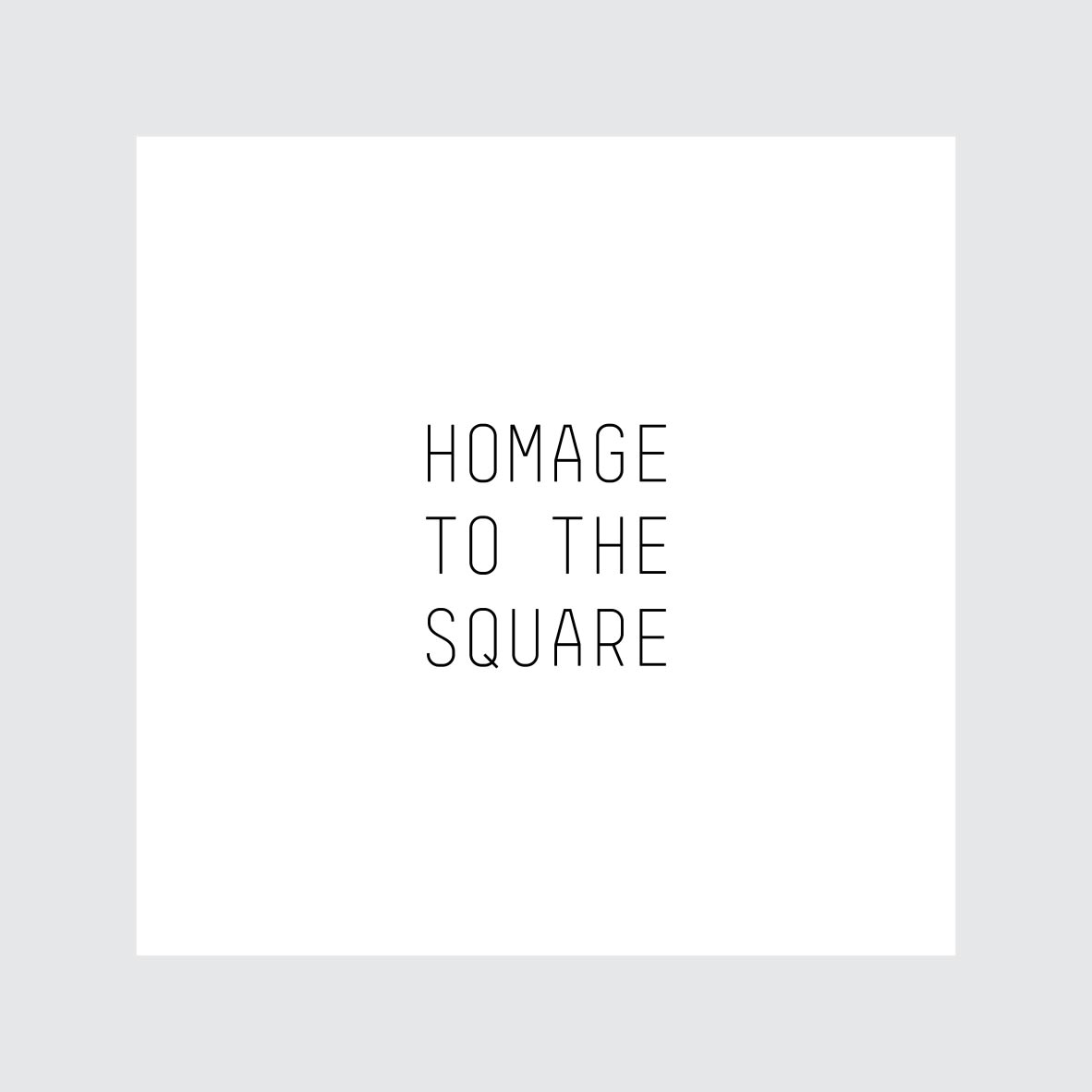Homage to the square
“Homage to the Square” is the title chosen by Josef Albers for all his works after 1950. These works comprise over one thousand paintings, all absolutely square in shape, in which the artist studies the optical effect that is determined by the juxtaposition of different colours within a fixed geometric pattern that is based upon the superimposition of varyingly-shaped squares.
The German artist’s mission, punctilious to the point of even becoming obsessive, influenced several artists from the period following the Second World War. Indeed, it was from the 1950’s that the square-shaped painting became much more popular (although at that particular moment with different aims and purposes). It had hitherto been almost neglected.
Without claiming to be complete, we have gathered a small collection of works that all bear this afore-mentioned characteristic and enjoy, generally-speaking, a marked sensitivity towards this particular geometric form.
Albers’ influence is obvious in the works of Italian Abstract artists such as Mauro Reggiani and Arturo Bonfanti as well as also in the works of Antonio Calderara (an artist who connects to the later Italian Minimalist painting movement in the 1960’s) and, let it not be forgotten, in the works of Getulio Alviani, who was an impassioned collector of works by Albers.
It is however less obvious that this particular shape was also highly recurrent in works by Italian artists in general in the 1960’s (Castellani, Bonalumi, Scheggi and Dadamaino), as well also in works by some of the main artists in the Arte Povera movement such as Giulio Paolini or Alighiero Boetti. Especially as far as this latter artist was concerned, it was his favourite shape for the tapestries that contained words with each letter set inside a square. Such a perfect combination of a written text along with a geometric shape assumed a certain magical significance for Boetti, almost as if the sentences had their very own intrinsic spatial dimension.
The works by Robert Mangold and by Angelo Savelli are also very interesting. Both artists disregarded the square shape but at the very same time they made use of this particular form to which, indeed, they felt irresistibly attracted. Mangold’s quest was for an impossible synthesis between the circle and the square whilst Savelli deconstructed the static equilibrium of this geometrical shape by making it fluctuate freely in space. To this end, it is interesting to mention a statement by Savelli himself: “I have eliminated the structure and the classical nature of the shape – the square. I have elaborated irregular geometric shapes by giving a sense of continuity to the first white painting created, the one by Malevich”.
The need for equilibrium was, in any case, retrieved by Ettore Spalletti, whose squares levitated into a metaphysical space, detached from the wall by a whole host of perspective and light-induced devices. The geometrical shape, a synonym for static quality, floated inside absolute space, weightless and purely mental.
-

Enrico Castellani
Superficie bianca, 1966
-

Antonio Calderara
Orizzonti 0 + 0 = 0, 1968,
-

Josef Albers
Study for Homage to the Square: Night Shade, 1957,
-

Getulio Alviani
Superficie a testura vibratile, 1973
-

Arturo Bonfanti
Ac. Murale-23, 1972
-

Giulio Paolini
Untitled, 1974
-

Robert Mangold
Circle Painting 3, 1973
-

Alighiero Boetti
Resta solo ciò che è e che non può essere diverso da ciò che è, 1988

